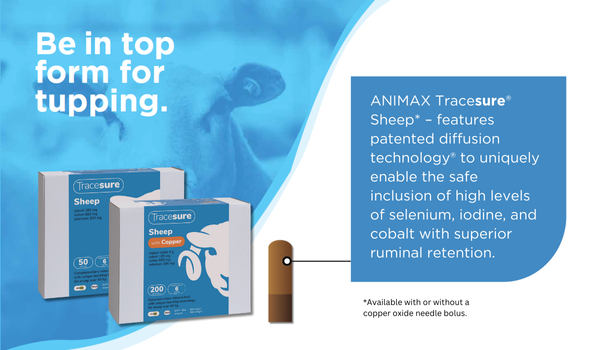Achieving prime ewe condition on autumn grass ready for tupping is one of the year’s most vital tasks to get right on any hill sheep farm.
Ovulation depends on ewes being on a good plane of nutrition as they head into tupping time.
Hill ewes that start the breeding season in poor body condition will go on to struggle to meet the needs of the growing foetus; posing nutritional stress that will raise the risk of lighter or even dead lambs. Poor condition heading into lambing will also reduce colostrum production and bonding; comprising the thrift of lambs that survived early life.
Ewe condition is the key to achieving a good lambing percentage and good lamb thrive. Even if tupping as late as November or December, shepherds need to be preparing the ewe (and tups) for tupping as early as August.
6 tips for promoting ewe condition and efficiency at tupping
Ewe efficiency is based on the weight of lambs weaned relative to the weight of ewes tupped, and is directly linked to profitability. You can work out your ewe efficiency based on your last lamb crop using this calculator tool from the Upland Farmer Toolkit site.
Conditioning ewes – thin ewes in particular – will set you in good stead for lambing 2025.
1. Feeding at tupping
Put thin ewes on good quality grazing paddocks with a provision of supplementary forage and/or feed, based on the condition of the ewes. Target 400 grams per day of a high energy and 16% protein feed, reducing to 250 grams per day when the tup goes in. Don’t forget to pay attention to their trace element nutrition demands – see below for more on that!
2. Health check at tupping
Check with your vet for those ewes that do not improve in condition and also for infections (pulmonary adenomatosis, mastitis for example) and parasite levels. Culling may be required rather than wasting more money on ewes that are not financially viable.
3. Grazing at tupping
Make sure the tupping fields are well rested over the course of 4 weeks by preparing ewes on other ground, reducing stocking density, or selling stock. In the event of bad weather and if ewes start to spoil the grazing, send the more productive ewes away from the farm for tupping.
4. Timing at tupping
Grass can unpredictably and rapidly deplete on higher land. Make sure meadow ground is adequate for supporting breeding ewes for 10 days (no longer as ewes can get too fit) before the tups go in.
5. Management tasks at tupping
Do all the stock management tasks at one go – vaccinating dipping, tailing, worming, drenching, and bolusing – to minimise ewe stress before tupping. Once done, they can settle into good grass before the tups go in.
6. Tupping follow-on
If you manage to get ewes in condition for tupping, don’t let things slip after tupping. Grazing must maintain quality right through until Christmas.
Is bolusing right for you and your ewes?
Almost all grazing land is short in one or more of the essential trace elements – cobalt, copper, iodine, and selenium. Sheep are naturally exposed to trace element antagonists as they eat close to the soil surface and take in antagonists in the soil – such as iron, manganese, sulphur, aluminium, and molybdenum – that can compromise trace element uptake.
Trace elements are all collectively critical to digestion (forage utilisation), immunity, reproduction, and growth. Supplying less than enough trace elements can impact on condition, fertility, lamb development and thrift. More than enough trace elements will either by-pass what the ewes can physically absorb or cause toxicity and cost you money.
Bolusing is the easiest and most precise and effective form of supplementation you can count on. Every sheep bolused with ANIMAX Tracesure® Sheep stands to have all the trace elements they need in a matter of seconds. You don’t need to worry about it again for another 6 months!
Sold on boluses? Get to grips with what boluses are on the market here (scroll down the page to get the bolus comparison table).



